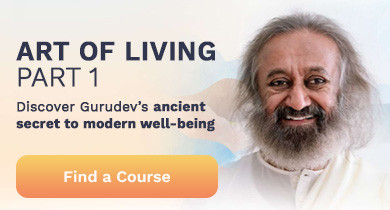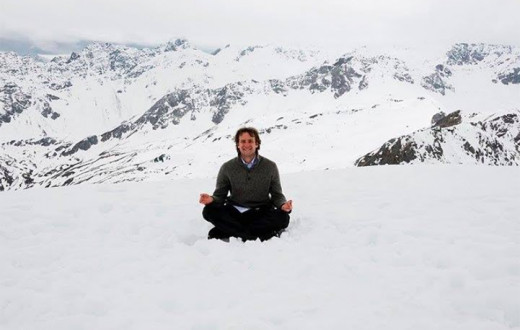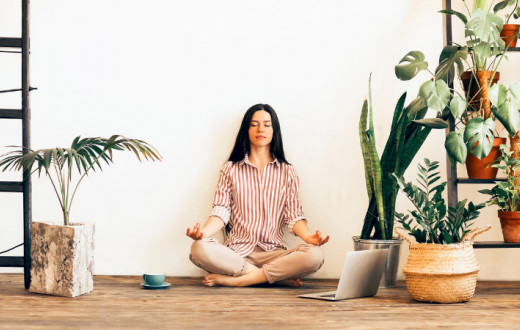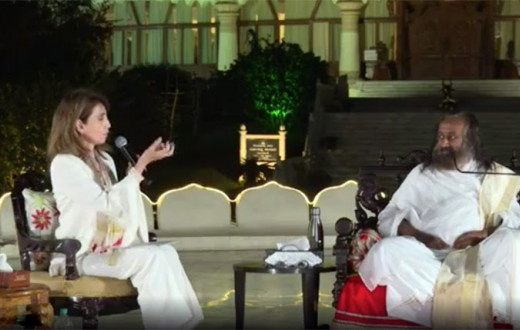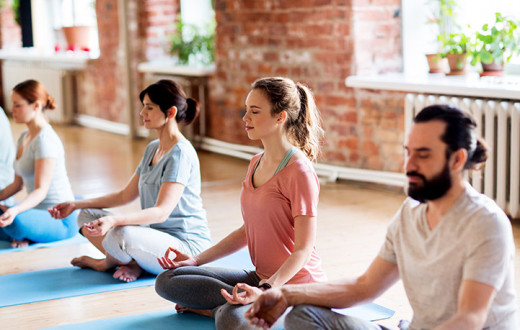Samir, one of Art of Living’s most dynamic teachers has transformed the lives of many Naxalites apart from empowering rural youth through yoga, meditation and other uplifting Art of Living practices. Samir has been traveling extensively in smaller towns and villages of India, reaching out to the youth.
Here Samir shares his experience of meditation and the impact that meditation has had on people.
Q. When did you learn to meditate and what was your first experience like?
Samir: It was in Rishikesh that I did my first meditation, back in March 2000. The experience was really very good. I felt really rejuvenated, I felt a sense of celebration that was beyond words and I also felt that I had disconnected from everything around me. I was in silence in the advance meditation course and by the third day I couldn’t see people – they were in the periphery and I was floating about. So that’s how it was. It was really very beautiful.
Q. Could you describe the quality of your life before you began meditating regularly and how do you see it now?
Samir: Before I started meditating, I was far more aggressive, more temperamental and maybe more adamant also. After I started meditating I felt more settled, complete with a feeling of inner peace. I found that I could face challenging situations with a lot more patience, tenacity and forbearance – even in the most physically trying times. In the past I would have reacted with irritation, fear or anxiety. But now something inside reassures me that everything will be taken care of – I have nothing to worry about. That’s the best part about regular meditation – it makes you strong from within. You feel protected and safe no matter what the situation is.
Q. Do you follow a particular time or routine for meditation?
Samir: Earlier I was more ritualistic, now I’m more “sahaj” (natural, easy).I meditate when I feel my body and mind need it – when I’m feeling tired, then I know, “Now I need it – it’s time.” This morning for example, we had a beautiful meditation in a puja.
Q. What would your advice be to those who have not experienced meditation?
Samir: If they have not experienced meditation they have not started living life yet. My advice to them is to at least experience meditation and then they may have a more judicious opinion and compare it to something else they do for stress relief – whether it is drinking or smoking or whatever… in terms of a cost benefit analysis and then decide on what they should do. They can take a more educated course of action once they’ve experienced meditation, rather than having a prejudiced view that this is for a certain age group or inclination. Experience it first hand before they form an opinion.
Q. Does one need to give up anything in order to meditate?
Samir: You don’t have to give up anything, actually. You can save yourself from certain things, (pauses)that includes alcohol and non vegetarian food. The way we do it in Art of Living is that we first build good habits and then bad habits drop off on their own – you don’t have to force them out. It (the change) happens from within. There’s no hard and fast rule.
Q. Could you share some benefits of practicing daily.
Samir: Benefits of meditation are manifold. No matter how many yagnas you do or how much puja and chanting, exercise, jogging and suryanamaskars you do – unless your mind doesn’t go into meditation you won’t feel complete. Finally, everything leads to meditation and if your mind does not go into meditation despite all the practices you might be doing, I think it’s a simple waste of time!
Q. Gurudev has mentioned that even one person meditating benefits so many others. Can you elaborate on this?
Samir: Certainly! I have had the good fortune of bringing the Sudarshan Kriya to cities of the world where it has never happened earlier. In the city of Mandalin, Burma, when we first taught the Sudarshan Kriya, when I left the venue, I could feel the entire city transformed – there was a sense of settlement and peace that was not there before. A very recent example is – I was in a small city in Uttar Pradesh, India, called Obera, in the District Sonbadra, where I was taking a DSN course and the meditations were so deep that by the third day of the course, while I was having breakfast I could feel peace in every element of that town. If one is sensitive one can feel it – there were only 18 course participants, yet 18 people could impact a town with a 45,000 population. Just 18 people meditating could bring a sense of peace the entire town.
Q. What do you think of our campaign ‘Meditate India’?
Samir: I think for the new age ‘Meditate India’ is a good word but Indians have always been meditating from time immemorial – we are able to meditate because Rishimunis have meditated on this land for ages. We are just a continuum of what has been happening and this shall continue and we can feel proud to be part of this tradition that started ages ago.
